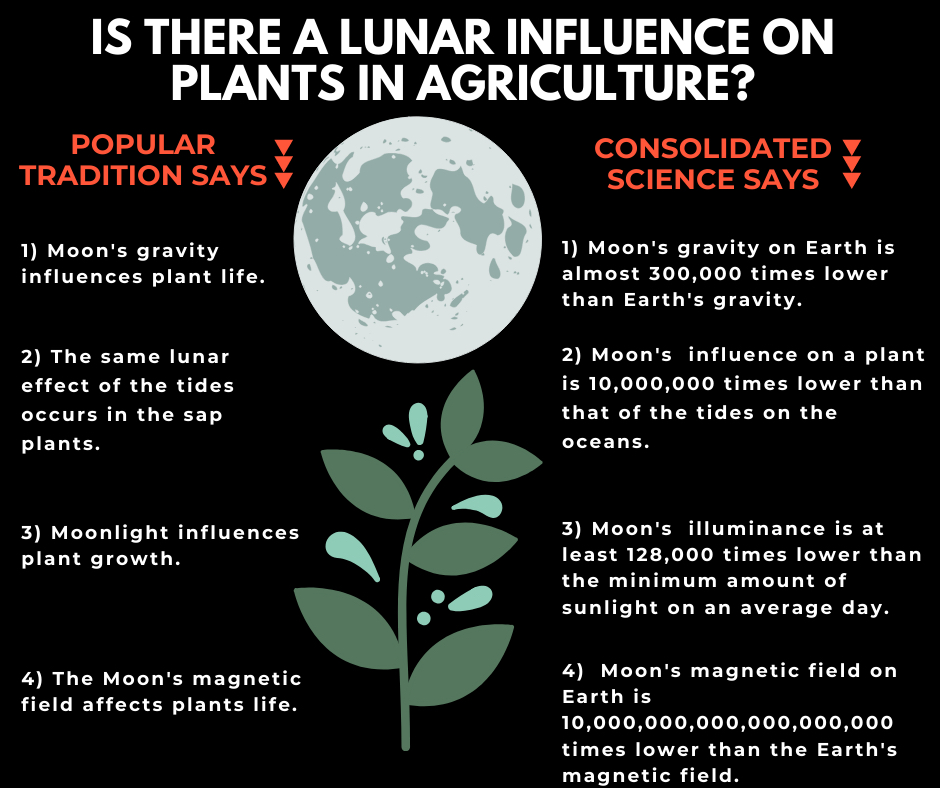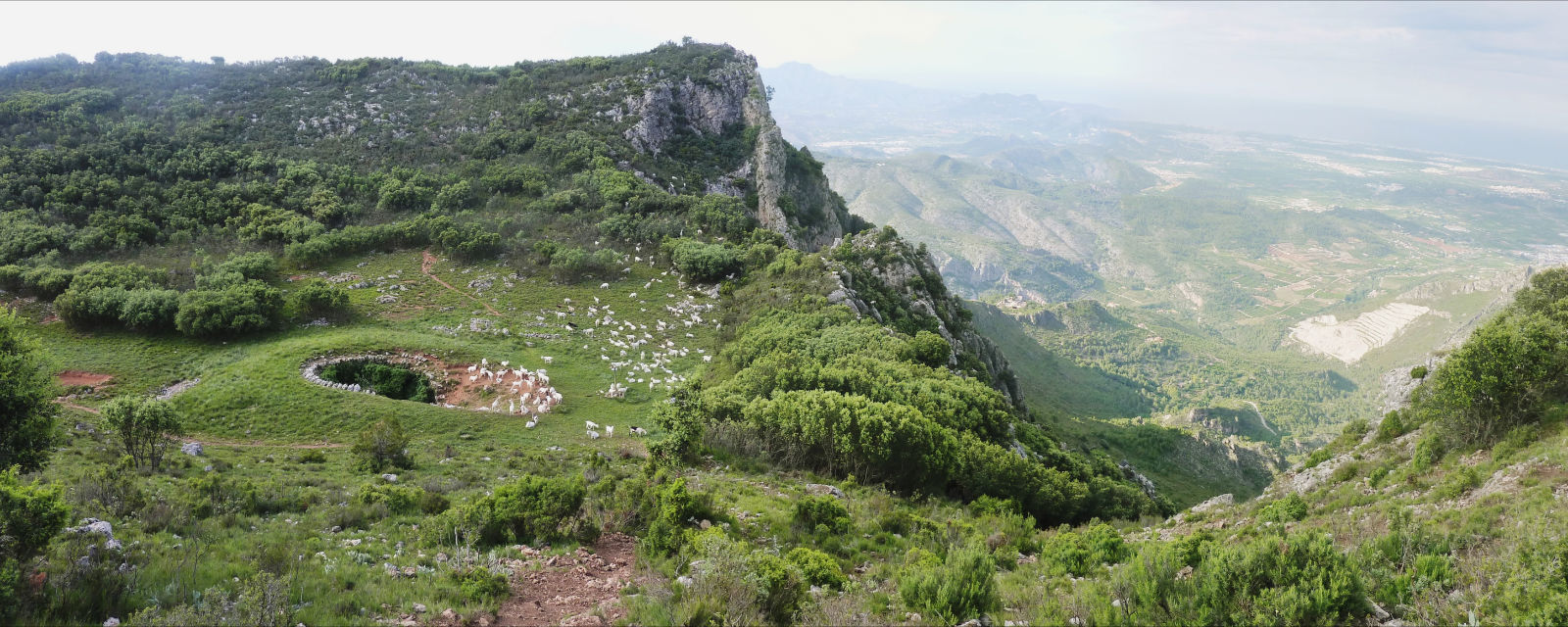Agricultural beliefs on moon influence

A research carried out by the Jardí Botànic and the Departament de Didàctica de les Ciències Experimentals i Socials warns of pseudoscience risk in relation to popular beliefs about lunar rhythms' influence on agriculture. The study has reviewed more than a hundred documents to analyze the factors influencing plants’ growth.
A research team from the Jardí Botànic and the Departament de Didàctica de les Ciències Experimentals i Socials de la Facultat de Magisteri de la Universitat de València warns of pseudoscience risk in relation to moon’s influence myths or beliefs on agriculture. The scientific revision’s findings of more than a thousand papers –including research papers, monographs, and higher education textbooks– have been published in Agronomy magazine.
The work’s origin is found in the Facultat de Magisteri’s classrooms, where –repeatedly– it is observed that students of Early Childhood and Primary Education degrees, and Master’s Degrees in Secondary Education –Physics and Chemistry and Biology and Geology specialties– “start the university believing in a relationship between moon phases and biology crops”, explains Professor Olga Mayoral, deputy of the Jardí Botànic de la Universitat de València. This reality led the teaching staff to propose a broad scientific revision, in order to verify if these moon’s myths about plants’ growth had any consolidated scientific basis both in the fields of biology and agronomy as in physics.
The authors, Olga Mayoral, Jordi Solbes, José Cantó, and Tatiana Pina, argue that the analyzed documents are, especially, scientific articles, but monographs and higher education textbooks have also been carefully studied –which are considered consolidated science and are employed in teaching degrees linked to botany, agronomy, and physics.

Although the first referenced article on agricultural beliefs related to the moon was published by Cyril Beeson in Nature magazine in 1946, studies related to this subject have continued to take place until as recently as 2020. This revision aims to collect the most relevant publications in order to confirm that, according to the work’s results, first of all, in the monographs “no relationship is established between the moon and the plants’ growth” and, secondly, that the articles’ arguments “do not provide any clear scientific evidence to corroborate the Earth’s satellite influence on crops”.
Promoting students’ critical thinking
Due to the absence of scientific support on the casual relationship between lunar influences –tides and luminosity, above all– and plants’ growth, the authors of this study encourage the teachers involved in science education to “objectively address pseudoscientific ideas on this subject while promoting students’ critical thinking”. The researchers responsible for this work also warn that some popular traditions related to the moon’s influence on plants’ physiology have been incorporated into the so-called biodynamic agriculture –an agricultural management system avoiding the use of industrial fertilizers, pesticides, and herbicides– such as organic farming while assuming that cosmic forces and rhythms, among others those of the moon, affect sowing and harvesting times.
Les investigadores i investigadors responsables d’aquest treball també alerten que algunes tradicions populars relacionades amb la influència de la Lluna en la fisiologia de les plantes s’han incorporat a l’anomenada agricultura biodinàmica, un sistema de gestió agrícola que evita l’ús de fertilitzants industrials, plaguicides i herbicides, com ara l’agricultura ecològica, però que assumeix que les forces i ritmes còsmics, entre d’altres les de la Lluna, incideixen en els moments de sembra i collita.

The authors of the research published in Agronomy at the Facultat de Magisteri. Photo: M.J.Picó
An important part of the research and bibliographic revision was done in different Harvard University libraries –especially in the Arnold Arboretum of Harvard University excellent one– during a research stay of Olga Mayoral and Tatiana Pina in 2019, co-financed by the Reial Col·legi Complutense (RCC)-Harvard.
The research team of this scientific revision published in Agronomy is part of the Research group on science education and science teacher training (Grup de recerca en educació científica i formació del professorat de ciències, GIUV2013-175) and is framed in two of its research lines: Science Teacher Training, Proposals for improvement; and Socio-scientific issues and critical thinking in scientific educations.

Graphic on popular beliefs and consolidated science published in Agronomy.
The study has developed within the framework of the project Proposal for improving science teacher education based on research and modeling in context (Propuesta de mejora de la formación del profesorado de ciencias basada en la indagación y modelización en contexto, EDU2015-69701-P), financed by the Ministeri d’Economia, Indústria i Competitivitat and the Unió Europea mitjançant els Fons FEDER.
Bibliografia
Mayoral, O.; Solbes, J.; Cantó, J.; Pina, T. What Has Been Thought and Taught on the Lunar Influence on Plants in Agriculture? Perspective from Physics and Biology. Agronomy 2020, 10, 955.








